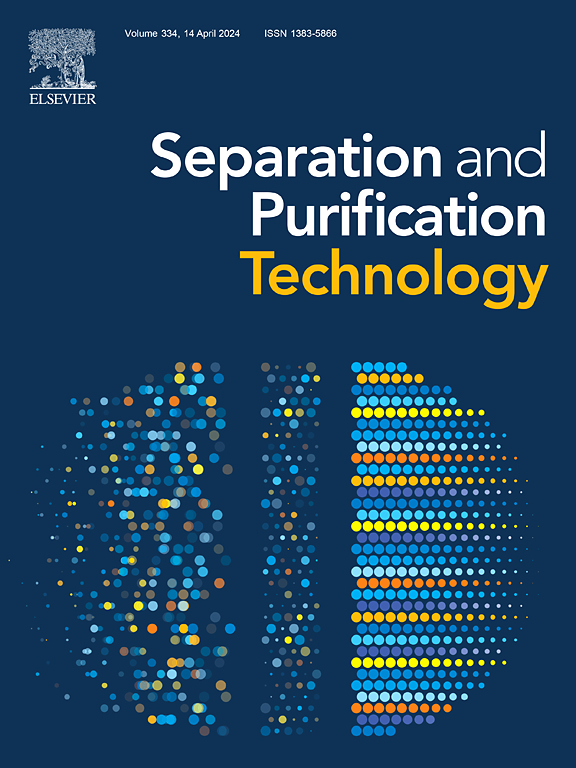Two novel [CuxIy]n-based MOFs with high BET surface area for efficient MTO products separation
IF 8.1
1区 工程技术
Q1 ENGINEERING, CHEMICAL
引用次数: 0
Abstract
Here, by utilizing mixed molecular building block strategy, two novel [CuxIy]n-based MOFs materials, JLU-MOF205 and JLU-MOF206 were successfully constructed by employing HPYBZ (HPYBZ = 4-(4-pyridyl) benzoic acid) and HPYA (HPYA = 3-(4-pyridyl) acrylic acid) organic ligands. Both MOFs possess typical [CuxIy] clusters and copper paddlewheel building units, JLU-MOF205 exhibits a unique 2D + 2D → 3D perpendicular polycatenated framework. JLU-MOF206 presents better structural stability compared to JLU-MOF205, which resulted in improving water stability, high Brunauer-Emmett-Teller (BET) surface area and extra open metal sites. Additionally, both [CuxIy]n-based MOFs demonstrate superior adsorption of C3H6 over C2H4, thereby achieving excellent C3H6/C2H4 selectivity. Breakthrough experiments confirmed their outstanding performance in separating C3H6/C2H4 binary mixtures, enabling the one-step purification of C2H4 and the recovery of C3H6. JLU-MOF205 samples can extract 43.65, 64.70, and 172.23 L kg−1 of high-purity (99.9 %) C2H4 from C3H6/C2H4 mixtures in different ratios (50/50, 20/50, and 10/90), respectively. For JLU-MOF206, it is also possible to extract 113.53, 230.79, and 501.28 L kg−1 of high-purity (99.9 %) C2H4, respectively. Moreover, their excellent separation selectivity and high reusability surpass many known MOFs materials, making them ideal candidate adsorbents for industrial separation applications.


求助全文
约1分钟内获得全文
求助全文
来源期刊

Separation and Purification Technology
工程技术-工程:化工
CiteScore
14.00
自引率
12.80%
发文量
2347
审稿时长
43 days
期刊介绍:
Separation and Purification Technology is a premier journal committed to sharing innovative methods for separation and purification in chemical and environmental engineering, encompassing both homogeneous solutions and heterogeneous mixtures. Our scope includes the separation and/or purification of liquids, vapors, and gases, as well as carbon capture and separation techniques. However, it's important to note that methods solely intended for analytical purposes are not within the scope of the journal. Additionally, disciplines such as soil science, polymer science, and metallurgy fall outside the purview of Separation and Purification Technology. Join us in advancing the field of separation and purification methods for sustainable solutions in chemical and environmental engineering.
 求助内容:
求助内容: 应助结果提醒方式:
应助结果提醒方式:


